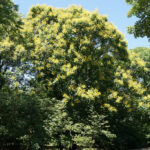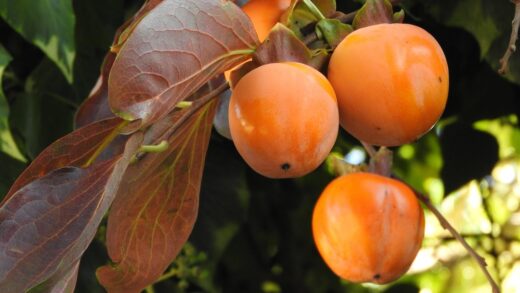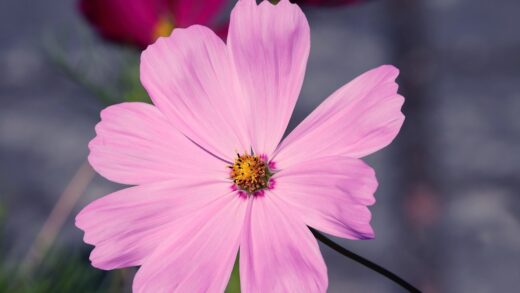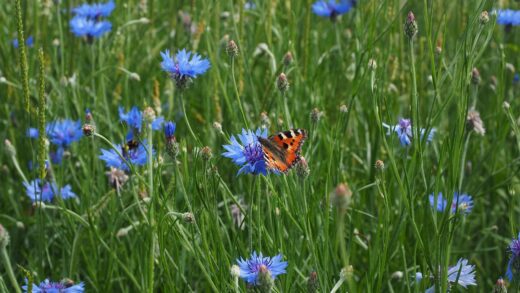For gardeners in climates that experience freezing temperatures, the arrival of autumn brings with it the critical task of preparing the brazilian jasmine for winter. This tropical native is not frost-hardy and will perish if left exposed to the cold, so taking protective measures is not optional, but absolutely essential for its survival. Successfully overwintering a Mandevilla allows you to preserve your beloved plant, ensuring it returns year after year, often growing larger and more magnificent with each season. This process involves more than simply moving a pot indoors; it requires a deliberate shift in care, creating a dormant period that allows the plant to rest and conserve its energy for the vigorous growth of the following spring. It is a vital chapter in the annual life cycle of the plant.
The primary objective of overwintering is to keep the plant alive in a state of dormancy, not to encourage active growth. The ideal location for this is a cool, bright, and frost-free environment. A space where the temperature remains consistently between 7 and 15 degrees Celsius is perfect. Suitable locations might include an unheated garage or basement with a window, an enclosed porch, a conservatory, or a cool greenhouse. The key is to avoid warm, heated living areas of the house where the combination of high temperatures and low light would encourage weak, spindly growth that is prone to pests.
Before you even think about bringing the plant inside, a thorough inspection is paramount. The warm, dry conditions of a typical home can be an ideal breeding ground for common plant pests like spider mites, aphids, and mealybugs, which may be present in low numbers on the plant outdoors. Bringing these pests inside can lead to a major infestation that can be difficult to control and may spread to your other houseplants. Carefully examine the stems and the undersides of the leaves for any signs of pests. As a preventative measure, it is highly advisable to treat the plant before moving it.
A good practice is to give the entire plant a gentle but thorough spray-down with a hose to dislodge any freeloading insects. Following this, an application of an insecticidal soap or horticultural oil, such as neem oil, is recommended. Be sure to coat all surfaces of the plant, including the stems and both the top and bottom of the leaves. This treatment will help to eliminate any pests that may have been missed during your initial inspection, ensuring that your plant comes indoors clean and pest-free, ready for its winter rest.
It is also a good time to tidy up the plant by pruning it back. A hard prune is often recommended before overwintering. This not only makes the plant more compact and manageable for its indoor space but also reduces the amount of foliage the plant needs to support during its dormancy, helping it to conserve energy. You can cut the vines back significantly, leaving just a framework of the main stems, perhaps reducing the overall size by one-third to one-half. This may seem drastic, but the plant will respond with vigorous new growth from the remaining stems in the spring.
More articles on this topic
Adjusting the care routine for dormancy
Once the brazilian jasmine has been moved to its chosen overwintering location, its care requirements will change dramatically from its active summer season. The most significant change will be in its need for water. During dormancy, the plant’s metabolic processes slow down to a crawl, and as a result, its water uptake is drastically reduced. The biggest mistake a gardener can make during this period is to continue watering with the same frequency as in the summer. This will inevitably lead to waterlogged soil and fatal root rot.
The correct approach is to allow the soil to become quite dry between waterings. You should check the soil every few weeks, and only provide a small amount of water when the top several inches of the soil feel completely dry to the touch. The goal is not to keep the soil moist, but simply to prevent the roots from desiccating completely. For many plants in a cool, dormant state, this may mean watering as infrequently as once a month. It is always better to err on the side of keeping the plant too dry rather than too wet during its winter rest.
During this dormant period, it is normal for the plant to look a bit sad. It will likely stop growing entirely and may drop many, if not all, of its remaining leaves. This is a natural part of the dormancy process and is not a cause for alarm. The plant is simply conserving its resources in its root system and woody stems, waiting for the signals of spring to begin growing again. Resisting the urge to “rescue” it with more water or fertilizer is crucial for its survival.
Fertilization should be stopped completely throughout the entire overwintering period. Adding fertilizer when the plant is not actively growing is not only useless, as the plant cannot utilize the nutrients, but it can also be harmful. The unused fertilizer salts can build up in the soil, potentially burning the dormant roots and causing damage. Feeding should only resume in the spring, once the plant has been moved back outdoors and you can see clear signs of new growth emerging.
More articles on this topic
An alternative method: Taking cuttings
For gardeners who may not have the space to store a large, dormant plant over the winter, there is an excellent alternative: taking cuttings. Instead of overwintering the entire parent plant, you can propagate new, smaller plants from cuttings in the late summer or early autumn. These small, young plants are much easier to accommodate on a bright windowsill or under grow lights inside the main living areas of a house. This method ensures you have a vibrant new plant ready for the next season, even if you decide to discard the large parent plant.
To do this, select several healthy, non-flowering stems from the parent plant. Take cuttings that are about 4 to 6 inches long, making a clean cut just below a leaf node. Remove the lower leaves from each cutting, leaving just a pair at the top. You can dip the cut end in a rooting hormone to encourage faster root development. Plant the cuttings in a small pot filled with a well-draining rooting medium, such as a mix of peat moss and perlite.
These cuttings will need a warm and bright environment to root successfully. Unlike a large dormant plant, these cuttings should be kept in a warmer spot, like a sunny windowsill. To maintain high humidity, which is crucial for rooting, you can cover the pot with a clear plastic bag, creating a mini-greenhouse effect. Keep the rooting medium consistently moist but not soggy. Within several weeks to a month, the cuttings should develop a healthy root system.
Once the cuttings are well-rooted, you can care for them as small houseplants throughout the winter. They will require more light and slightly more frequent watering than a large dormant plant, but still less than a plant in active summer growth. As spring approaches, these new, vigorous young plants will be ready to be potted up and moved outdoors after the last frost, giving you a significant head start on the growing season without the challenge of finding space for a large, dormant container.
Waking the plant up in spring
As the days begin to grow longer and the threat of frost has passed, it is time to begin the process of waking your overwintered brazilian jasmine from its slumber. This transition from its dormant indoor location back to an active outdoor life needs to be handled gradually to avoid shocking the plant. Simply moving it from a cool, dim garage directly into the bright, warm spring sunshine can scorch the leaves and stress the plant significantly.
The process of re-acclimatization, often called ‘hardening off’, should take place over the course of one to two weeks. Start by placing the plant in a sheltered, shady spot outdoors for just a few hours on the first day. Over the subsequent days, gradually increase the amount of time the plant spends outside and slowly introduce it to more direct sunlight. Bring the plant back indoors or into a protected area if nighttime temperatures are still forecast to drop close to freezing.
As you begin to see signs of new growth, such as swelling buds or emerging leaves, you can start to gradually increase your watering frequency. Water the plant thoroughly and then wait for the top inch of soil to dry out before watering again. This is also the time to resume your fertilization schedule. Start with a half-strength dose of a balanced, water-soluble fertilizer to give the plant a gentle boost of nutrients as it begins its active growth phase.
This is also an excellent time to repot the plant if it has become root-bound in its container. You can move it to a pot that is one size larger, using fresh, high-quality potting mix. This will provide the roots with more space to grow and a fresh supply of nutrients. Any final pruning to shape the plant or remove any stems that may have died back over the winter can also be done at this time. With this careful reintroduction to the outdoors, your overwintered Mandevilla will be well-prepared to reward you with another spectacular season of growth and bloom.


















